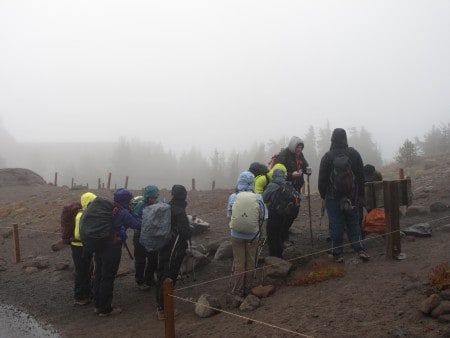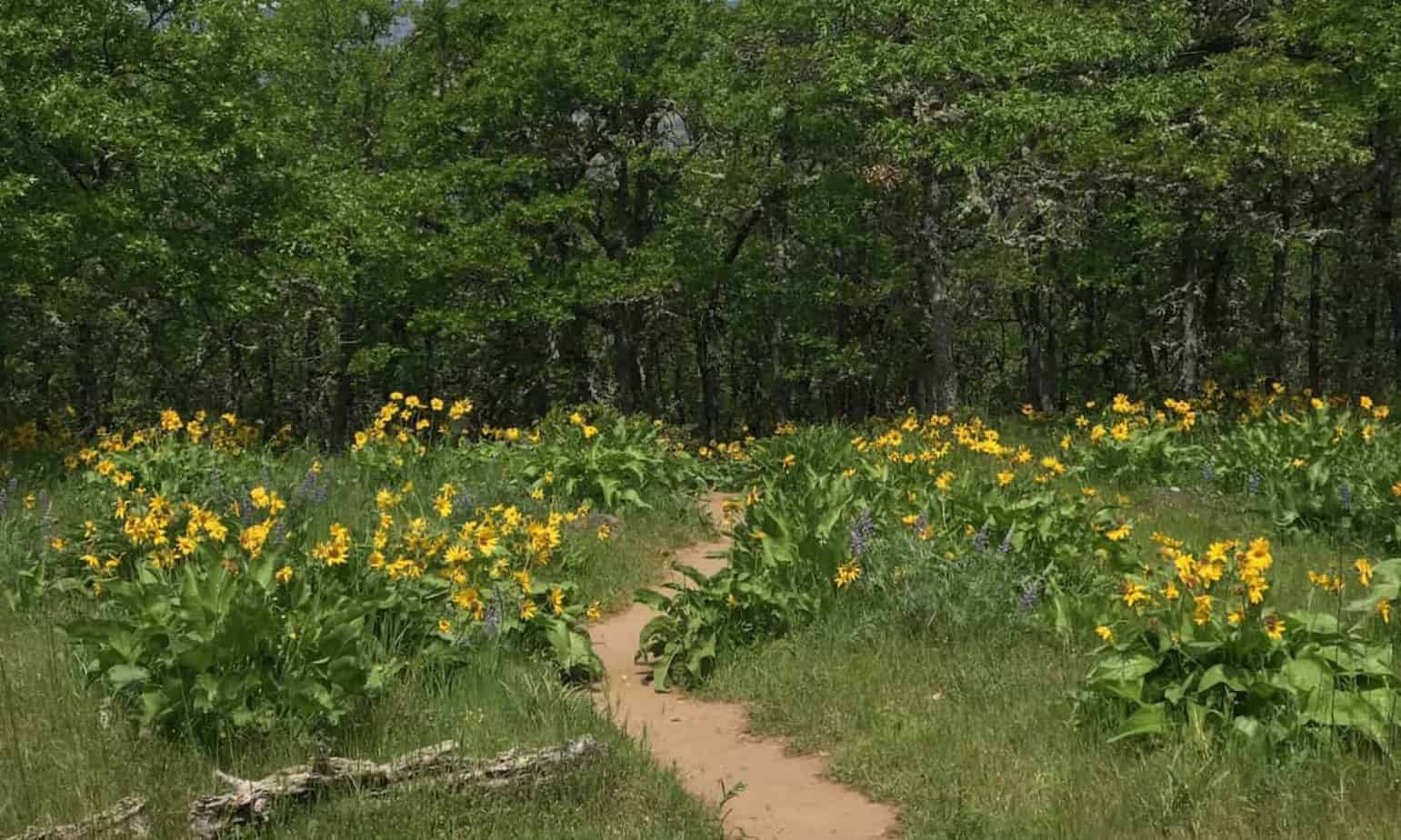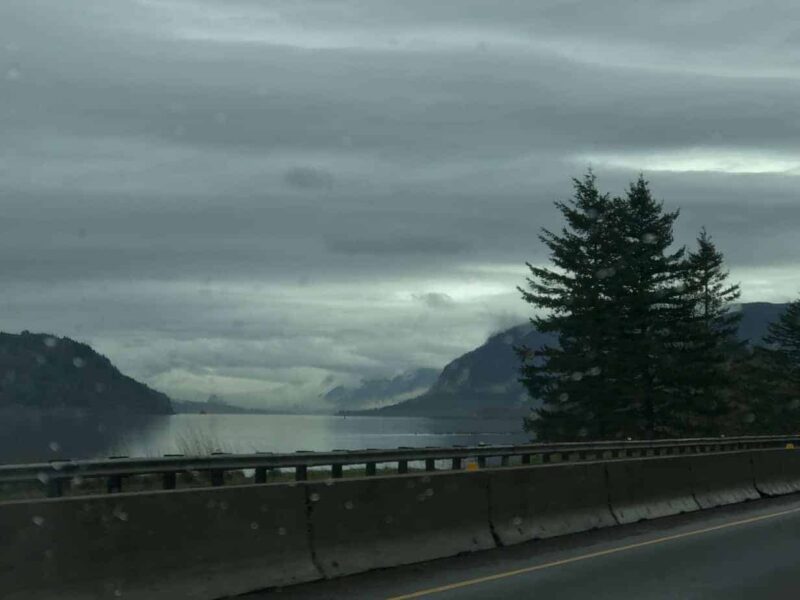For many folks, often including myself, winter is just not a time we go hiking around Portland. Some folks ski or snowboard, some snowshoe, some stick in town for walks, ride bikes, maybe paddle. Or they just don’t go out there at all.
This winter, I have made a real effort to get out there more often. But when hiking around Portland in the winter, how do we manage the weather, the roads, and the conditions? When do we hike, when do we snowshoe? How to even approach such a decision?
I don’t ride bikes, ski or paddle, so for suggestions on that stuff, you’ll need to go elsewhere. Same thing for the best rain gear, etc.
Here, I will lay out how I approach a series of decisions as I plan my outdoor activities for the week: When will I go? Where will I go? What will I do?
First, Decide When to Go
Obviously, this is a huge limiting factor, because work, family, and other things will probably constrict your choices. But let’s assume, for kicks, that you have a block of time in which you get to pick one day to go out and have some fun. For me, that happens to be a day or two per week: I have lots to do as a business owner, but not much of a fixed schedule.
If you can possibly go on a non-weekend, I highly recommend it. Seems no place, especially in Covid times, is immune to Crowded Trailhead Parking Syndrome. And if you are stuck with weekends, go super early or to someplace new or a little farther away.
Within your available block of time, you now move on to …

Check the Weather
Here are several websites for relevant weather forecasts:
-
- Portland forecast, as a starting point.
- Northern Oregon Cascades
- Southern Washington Cascades, which is usually, but not always, about the same as the above
- Cannon Beach for the coast
- Hood River for the Eastern Gorge
At this point in the process, I just go big picture — cloudy, sunny, chance of rain, rain, what? I also check twice a day and look for general trends. For the two mountain forecasts it’s time to think about …

Hiking vs Snowshoeing
I love snowshoeing — sometimes.
I am, in fact, quite picky about when and where I will go. It boils down to a three-pronged decision, based on a red-yellow-green ranking system, for the roads, the conditions, and the weather. I will snowshoe when the roads are basically clear, the weather is good (ie, not raining where I will be) and there is at least some fairly recent snow.
If two of these, especially the weather, are “yellow” or “red,” I go hiking or stay home.
If you feel the same way, then go back to those mountain forecasts up there, and let’s talk about the snow level.
Snow Level: Assessing the Weather Where You Will Be
The snow level is just the elevation at which rain turns to snow. It’s not entirely that simple, of course, and it varies a little as you move around. Basically, though, it comes down to this: all snowshoeing should be above that line, because snowshoeing in the rain sucks.
The trick, though, is how much and far you want to drive above that line. In my personal ideal world — assuming it’s not a dry day — I drive clear roads through the rain to the snow level, park my car just above it, then go snowshoeing (on fresh snow) while snowflakes fall on me.
With the snow level in hand for your prospective days, you can now move on to where you might snowshoe.
This is where this list of Mt. Hood Snoparks with Elevations comes in very handy. (Except Clark Creek is gone) Snow level at 4,000 feet? Off you go to Barlow Pass or White River! Snow level at 3,000 means you’ll be driving on a lot of snow to get there, so maybe go someplace lower. Et cetera.

Assessing Snow Conditions
You also want, when snowshoeing, to ideally be walking on fairly fresh snow. Doesn’t have to be a lot, but once you’ve stomped around on crunchy snow with your ears ringing from the plastic and metal under your feet scraping along, you’ll know why this is. (Add rain to that picture, and you’ll hate everybody.)
So keep an eye on two things here: the snow levels and accumulations for several days before your trip, and relevant Oregon SNOTELS.
What the heck is a SNOTEL? Simple: a reporting station that sends out data every day on lots of stuff, but mainly on current snow levels. This is handy on several levels, but for our purposes here, you can check a nearby SNOTEL at about the same elevation, to see what that last system to go through dumped in that area.
My go-to for the Hood area is Mud Ridge, which is located around 4,000 feet elevation above Trillium Lake. Check that report page, and you’ll see Snow Level in the fifth column.
Another great way to check the current snow levels is this site from Adam Schneider.
Hybrid Hike / Snow Walking
Just a note here to say that sometimes you can start out hiking, then arrive at the snow. Here you may need snowshoes, and you may need microspikes; you’ll hopefully know by watching the weather before you go and checking the snow levels.

A Case Study: When to Go? Hike or Snowshoe?
So let’s say it’s Wednesday, and I am looking to get out early next week. Here’s my process.
-
- Check the Portland weather forecast for the big picture prospects for early next week.
- Check the mountain forecasts for the same, especially with an eye on snow level and accumulations the next several days.
- With the above, I can start to focus on a day. Let’s assume that Tuesday looks like the better weather generally, so that’s the day.
- Assuming it’s not going to be dry everywhere on Tuesday — because it’s winter in Oregon — compare the various region forecasts. If one looks a lot better, plan to go there, which could well rule out snowshoeing. If it’s pretty much rainy all over, decide to hope for snowshoeing.
- With each passing day, focus in on the snow levels, recent reports from SNOTELS, and the forecast for Tuesday,
- Let’s say that it’s not going to be dry and that the snow levels all weekend are ranging from 2,000 to 4,000 feet, with maybe a foot total coming down.
- Monday and Monday night become the key: I figure that if it snows anything more than an inch or two at, say, 3,000 feet, then I don’t really want to drive above that. Meanwhile, the forecast for Tuesday is (in theory) getting more accurate the closer we got, so I watch that very closely.
- If it looks like Tuesday morning I can find a SnoPark at an elevation that hasn’t had a lot of snow below it lately, and will be at or just above the snow level on Tuesday, with almost any recent snow above it for good conditions, that’s where I go.
- Otherwise, I either go hiking or stay home.
- Simple!
Read about more great hikes near Portland. Connect with Paul:
-
-
Twitter (@AuthorPaulG)
-
Instagram (pdx.paul.g)
-
“60 Hikes” page on Facebook.
-
I also write about life in a taxi, English soccer, and being in recovery
-
Get it all in my free monthly(ish) e-newsletter below:
-









